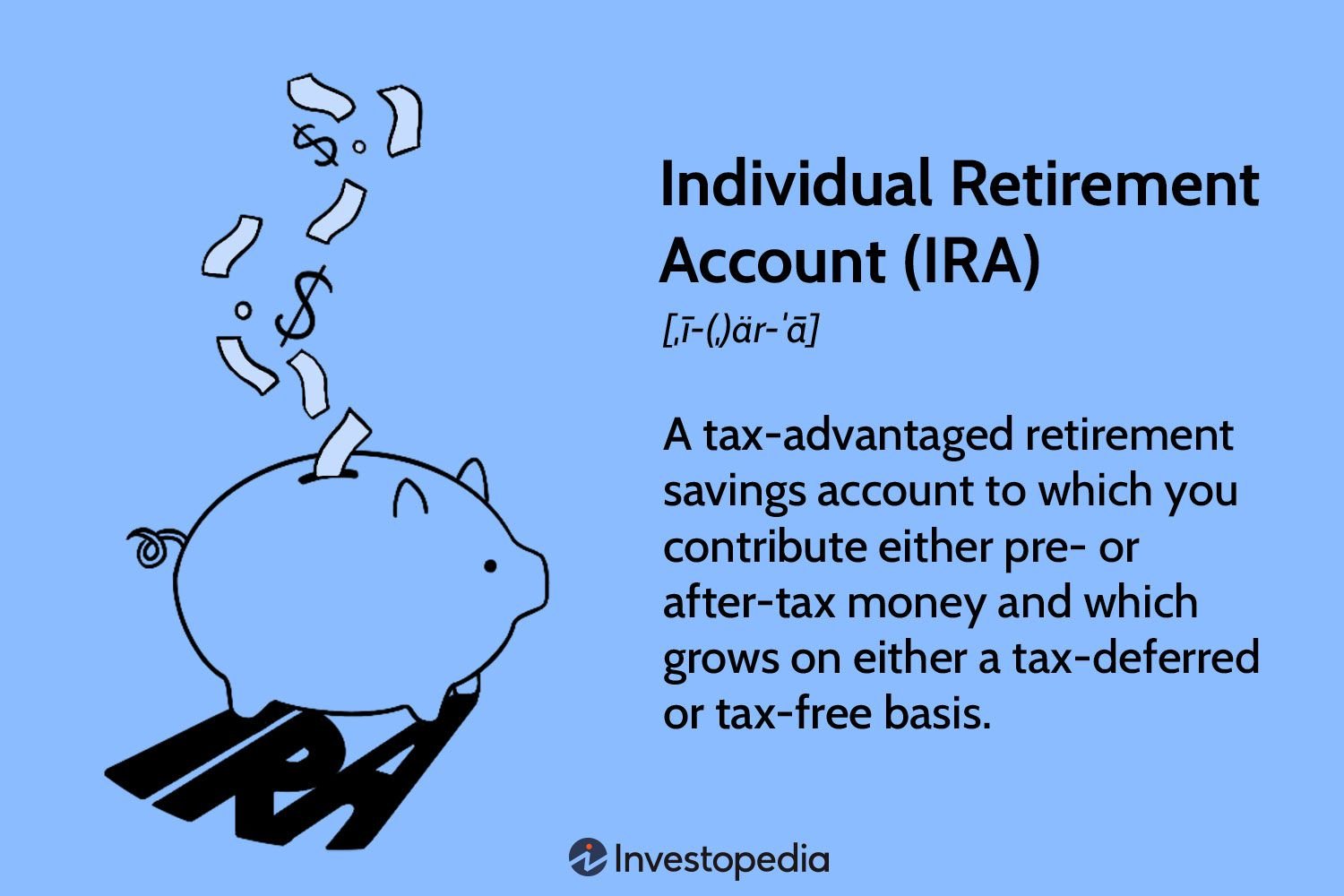Are you baffled by retirement contribution limits? Wondering what they are and how they might affect your savings goals? Look no further! In this article, we’ll dive into the intricacies of understanding retirement contribution limits. We’ll break it down in simple terms, so you can make informed decisions about your retirement savings. So, let’s demystify the topic and ensure you have a solid grasp on this crucial aspect of financial planning. Let’s get started!
Understanding Retirement Contribution Limits
Retirement planning is an essential part of securing your financial future. One crucial aspect to consider when planning for retirement is understanding retirement contribution limits. These limits determine how much you can contribute to specific retirement accounts, such as 401(k)s and IRAs, each year. By having a thorough understanding of these limits, you can make informed decisions about saving for retirement and maximizing your contributions. In this article, we will explore the various retirement contribution limits, their importance, and strategies to optimize your retirement savings.
Why Are Retirement Contribution Limits Important?
Retirement contribution limits serve a vital purpose in safeguarding retirement accounts from excessive contributions. These limits are set by the Internal Revenue Service (IRS) and ensure that individuals do not take advantage of tax-advantaged retirement accounts by contributing disproportionately high amounts. By adhering to these limits, retirement savings remain fair and accessible to all individuals, irrespective of their income level.
Furthermore, retirement contribution limits create a level playing field for all taxpayers. Without these limits, high-income individuals could potentially contribute significantly more to their retirement accounts, providing them with a disproportionate advantage and potentially reducing the availability of retirement savings options for others. The limits ensure fairness and help maintain the integrity of retirement savings programs.
Types of Retirement Contribution Limits
There are different types of retirement contribution limits, each corresponding to specific retirement account types. Let’s explore these limits in more detail:
1. 401(k) Contribution Limits
401(k) plans are employer-sponsored retirement accounts that allow employees to save for retirement through pre-tax contributions. The IRS sets annual contribution limits for 401(k) plans, which include both employee and employer contributions. As of 2021, the contribution limit for employees is $19,500. However, individuals who are 50 years or older can make additional catch-up contributions of up to $6,500, bringing their total allowable contribution to $26,000.
It’s important to note that employer matching contributions do not count towards individual contribution limits. Therefore, even if your employer contributes to your 401(k), you can still contribute up to the maximum annual limit set by the IRS.
2. Traditional and Roth IRA Contribution Limits
Individual Retirement Accounts (IRAs) are personal retirement accounts that individuals can contribute to outside of an employer-sponsored plan. There are two types of IRAs: Traditional IRAs and Roth IRAs. Each has its own set of contribution limits:
– Traditional IRA: As of 2021, the annual contribution limit for a Traditional IRA is $6,000. Individuals who are 50 years or older can make catch-up contributions of up to $1,000, resulting in a total allowable contribution of $7,000.
– Roth IRA: The contribution limits for Roth IRAs are the same as Traditional IRAs. You can contribute up to $6,000 annually, with an additional $1,000 catch-up contribution for individuals aged 50 and above.
It’s worth mentioning that the contribution limits for IRAs are not affected by employer contributions or other retirement accounts. However, there are income limits for contributing to a Roth IRA, depending on your filing status and modified adjusted gross income (MAGI). If your income exceeds the limits set by the IRS, you may not be eligible to contribute to a Roth IRA directly.
3. SEP IRA Contribution Limits
A Simplified Employee Pension Individual Retirement Account (SEP IRA) is a retirement plan specifically designed for self-employed individuals and small business owners. SEP IRA contribution limits differ from those of Traditional and Roth IRAs and are calculated based on a percentage of an individual’s compensation.
For 2021, the maximum contribution limit for SEP IRAs is the lesser of 25% of an individual’s net self-employment income or $58,000. It’s important to note that the calculation of SEP IRA contributions can be more complex, and consulting with a financial advisor or tax professional is recommended to ensure accurate contribution calculations.
Strategies to Maximize Retirement Contributions
While understanding retirement contribution limits is important, it’s equally essential to explore strategies that can help maximize your retirement savings. Here are some strategies to consider:
1. Take Advantage of Employer Matching Contributions
If your employer offers a matching contribution to your retirement account, make sure you contribute enough to receive the full match. Employer matches are essentially free money and can significantly boost your retirement savings. By contributing at least the amount necessary to receive the maximum employer match, you’re effectively maximizing your contributions without exceeding the IRS limits.
2. Consider Multiple Retirement Accounts
If you have the means, consider diversifying your retirement savings across different account types. For example, you can contribute to both a 401(k) and an IRA, taking advantage of the respective contribution limits for each account. This allows you to maximize your tax-advantaged retirement savings while staying within the limits of each account type.
3. Utilize Catch-Up Contributions
If you’re 50 years or older, take advantage of catch-up contributions. Whether it’s a 401(k) or an IRA, catch-up contributions allow you to contribute additional amounts beyond the standard contribution limits. By utilizing catch-up contributions, you can accelerate your retirement savings in the years leading up to your retirement.
4. Explore Other Retirement Savings Options
In addition to traditional retirement accounts, consider exploring other retirement savings options, such as Health Savings Accounts (HSAs) or non-retirement investment accounts. While these accounts may not have the same tax advantages as retirement accounts, they can still provide valuable savings opportunities to supplement your retirement funds.
5. Regularly Review and Adjust Your Contributions
As your financial situation evolves, regularly review and adjust your retirement contributions. Factors such as changes in income, family circumstances, and financial goals can impact your retirement savings strategy. By staying proactive and adjusting your contributions as needed, you can optimize your savings and ensure you’re on track to meet your retirement goals.
Understanding retirement contribution limits is crucial for effectively planning and saving for retirement. By familiarizing yourself with the contribution limits for various retirement accounts, you can make informed decisions to maximize your savings while adhering to IRS regulations. Remember to take advantage of employer matches, consider diversifying your retirement accounts, and explore strategies like catch-up contributions to optimize your retirement savings. Regularly review your contributions and consult with financial professionals as needed to stay on track towards a secure and comfortable retirement.
Roth IRA | 401k | 403b Retirement contribution and income limits 2023
Frequently Asked Questions
Frequently Asked Questions (FAQs)
What are retirement contribution limits?
Retirement contribution limits refer to the maximum amount of money an individual can contribute to their retirement account in any given year. These limits are set by the Internal Revenue Service (IRS) and vary depending on the type of retirement account.
Are there different contribution limits for different retirement accounts?
Yes, different retirement accounts have different contribution limits. Some common retirement accounts include 401(k)s, Individual Retirement Accounts (IRAs), and Roth IRAs. Each of these accounts has its own specific contribution limit set by the IRS.
Can I contribute more than the set limits?
Contributing more than the set limits to your retirement account may result in penalties and tax consequences. It is essential to stay within the contribution limits to avoid any potential issues.
What happens if I contribute more than the allowed limit?
If you contribute more than the allowed limit to your retirement account, you may be subject to excess contribution penalties. These penalties can include additional taxes and potential disqualification of the account’s tax advantages. It is important to monitor your contributions and ensure they do not exceed the set limits.
Do contribution limits change every year?
Yes, contribution limits can change annually. The IRS adjusts the limits based on factors such as inflation and economic conditions. It is crucial to stay updated with the current year’s contribution limits to make informed decisions about your retirement savings.
Where can I find the current retirement contribution limits?
The IRS website is the best source for finding the current retirement contribution limits. They provide detailed information on contribution limits for various retirement accounts, including any changes or updates.
Can contribution limits differ based on age?
Yes, contribution limits can differ based on age for certain retirement accounts. For example, individuals who are 50 years or older may be eligible to make additional catch-up contributions to their retirement accounts. These catch-up contributions allow older individuals to boost their retirement savings.
How do I calculate my maximum allowable contribution?
Calculating your maximum allowable contribution depends on several factors, including the type of retirement account you have, your age, and your annual income. Consulting with a financial advisor or using online calculators specifically designed for retirement contributions can help you determine your maximum allowable contribution.
What are the benefits of maximizing my retirement contributions?
Maximizing your retirement contributions offers several benefits. It allows you to take full advantage of tax advantages associated with retirement accounts, helps you build a larger nest egg for retirement, and increases the potential for long-term growth on your investments. By maximizing contributions, you can work towards achieving your retirement goals more effectively.
Final Thoughts
Understanding retirement contribution limits is essential when it comes to planning for a financially secure future. These limits determine the maximum amount of money individuals can contribute to their retirement accounts each year. By familiarizing ourselves with these limits, we can make informed decisions and maximize our retirement savings. It’s important to stay updated on any changes in these limits to ensure we are taking full advantage of tax advantages and employer matching contributions. So, whether it is a 401(k), IRA, or any other retirement plan, understanding retirement contribution limits is crucial for making smart financial choices.



